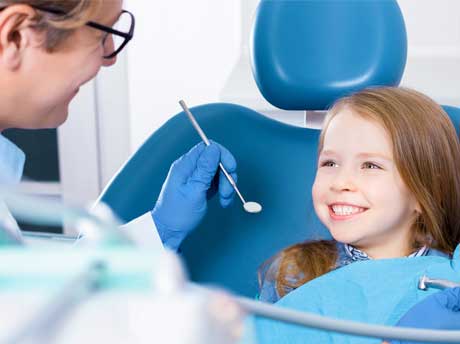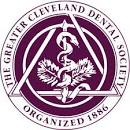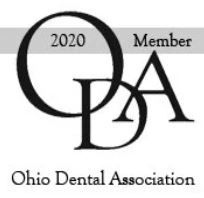Pediatric
American Dental Association
A.D.A. recommends that children are seen for their first visit between the ages of two and three. Also, potential orthodontic patients are screened for evaluation between the ages of seven and nine.
Teething
Babies are as individual in their teething as they are in everything else, they do. It's not uncommon for some babies to drool for weeks before their first tooth comes in. For others, teeth just seem to appear without much fuss at all. Quite often, a baby will have sore or tender gums that tend to make them irritable. To help soothe any sore spots, gently rub them with a clean finger or the back of a small cold spoon. Teething rings also work well. Try and avoid teething biscuits since many of them contain sugar and shouldn't be offered.
Some parents worry that their child's teething is either too early or too late. There is absolutely no link between when the child's teeth are coming in and how strong the teeth will be. Most babies begin to get primary teeth after the age of four months, usually six to nine months. Be sure to examine all of your baby's teeth, especially on the inside or the tongue side, every two weeks for dull whiter spots or lines. These can be signs of nursing bottle decay. If a bottle is left in an infant's mouth for a long period of time and it contains anything but water, decay can occur more rapidly.
Sugar in the liquid mixes with bacteria in the dental plaque to form acids that attack tooth enamel. Each time your child drinks liquids containing sugar, acids attack the teeth for at least 20 minutes. When your children are awake, their saliva tends to carry away the liquid. But during sleep, the saliva flow decreases, and these liquids pool around the child's teeth for long time periods bathing the teeth in acids. If your baby needs a bottle for comfort before falling asleep, fill the bottle with plain water. Regardless of your child's age, if you notice anything unusual in your baby's mouth, seek dental care immediately.
Losing Baby Teeth
The process by which a child loses their baby teeth is a simple one. At about age six, the roots of the baby teeth begin to dissolve, as this happens, the teeth begin to get loose. A baby tooth may wiggle about for quite a while before the tooth actually falls out. It is not abnormal for the permanent tooth to make an appearance with the baby tooth still in the mouth. If, however, the baby tooth does NOT fall out soon after the permanent tooth breaks through, notify your dentist. An over-retained baby tooth may interfere with the normal development and alignment of the adult tooth.
Baby teeth are also responsible for guiding the permanent teeth into their proper position in the jaw. If a baby tooth is lost prematurely due to an accident or decay, it is important that the space be held open. Usually, this is done with a little device called a space maintainer. If this space is not held open, the tooth underneath may have problems growing in later on. Baby teeth generally come out when they are ready without any complications. Notify your dentist of any problems or questions.
Thumb Sucking
Sucking is a normal reflex of a baby. Simply put, it relaxes and comforts them. The need for sucking usually comes to an end between the age of two or three. But for some, prolonged and vigorous sucking after the age of four can cause problems with normal dental development. If you are concerned your child's sucking may cause dental problems, visit your dentist, and discuss the matter. He or she can tell you the best method for weaning your child from the habit.
All About Our Teeth
We are born with two sets of teeth, primary or first and secondary or permanent. The primary teeth are also called deciduous, as are trees, which lose their leaves every fall. Deciduous teeth begin to appear at about four to nine months. Twenty teeth make a complete set, and all are in by age three. The permanent teeth start to erupt at about age six, and all are present except the wisdom teeth between the ages of twelve to fourteen. The twelve-year molars are the last to grow in until the wisdom teeth start to break through from age 17 to 25. Including wisdom teeth, we have 32 teeth. Few people, however, have room for all 32 teeth, which is why wisdom teeth may need to be removed.
The front teeth that cut your food are called incisors. Side teeth that shred food are called premolars or bicuspids. The back teeth that chop food are called molars. Since our second set of teeth is the set we are supposed to keep for the rest of our lives, it is important that they be given proper care. Regular and thorough brushing and flossing, as well as routine checkups by your dentist, will do much to safeguard your smile.










